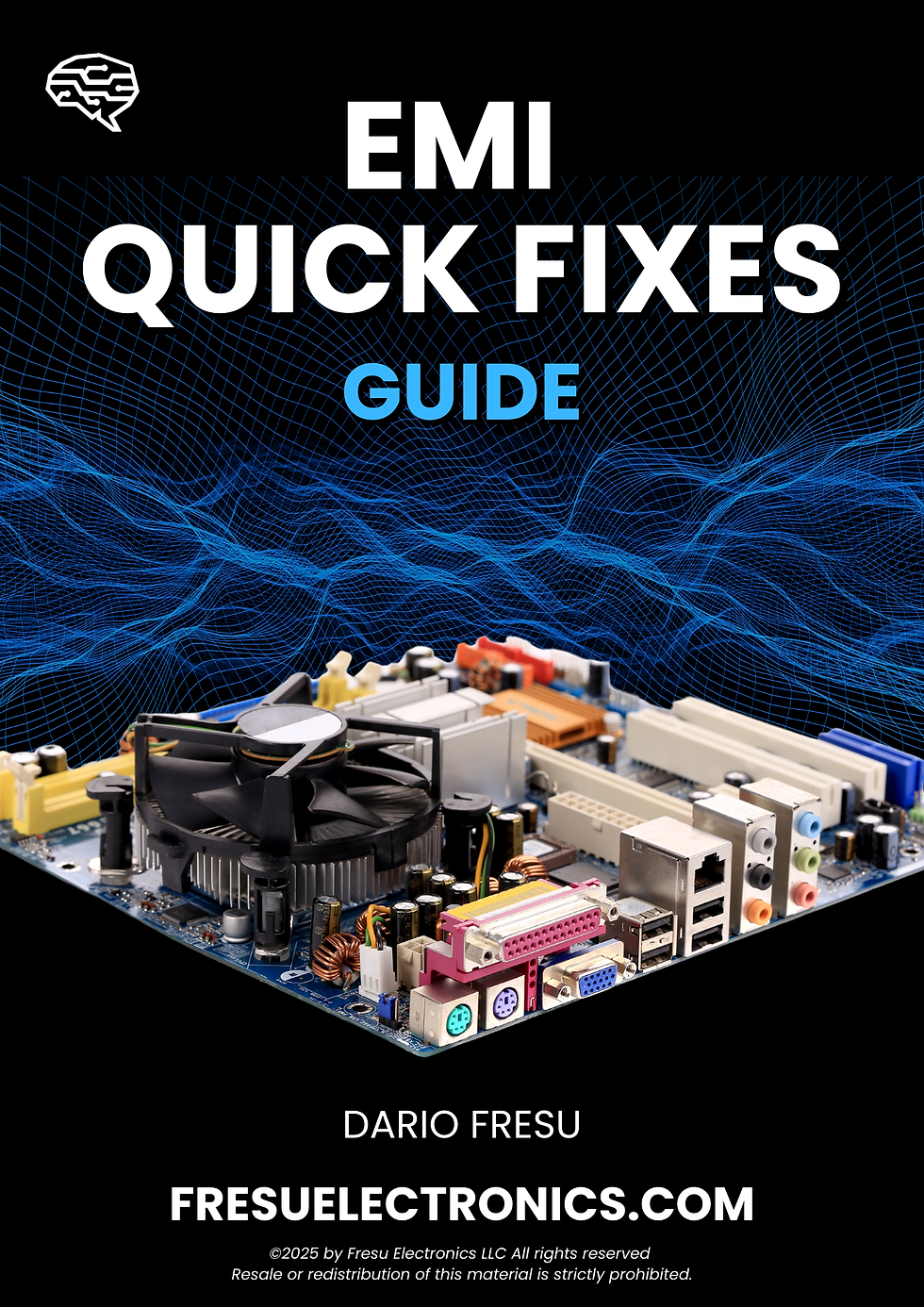How to Effectively Conduct an EMI Design Review for Your PCB
- Dario Fresu

- Nov 19, 2024
- 23 min read
Updated: Apr 14
This article will walk you through the fundamentals of performing an EMI project review for a Printed Circuit Board layout. We'll concentrate on a motherboard design that includes AllWinner-A64 processors, which is a fairly intricate system.
The project under review is the TERES-I from Olimex. As EMI specialists, we will examine the key areas to focus on to enhance the board's EMI performance.
WATCH THE LESSON HERE:
PCB Layer Arrangement
One of the first things I check during an EMI review is whether the stackup is correct.
Getting the stackup right accounts for about 90% of the EMI performance.
Why is that?
Because the stackup determines how the electromagnetic fields are contained within the PCB.
What do I mean by that?
In PCB design, layers always come in pairs.
For example, if I have a signal layer, there must automatically be a return reference plane (RRP) adjacent to it—this should be second nature.
What does "adjacent" mean?
It means the return reference plane should be directly above or below the signal layer.

It’s important that the return reference plane (RRP) is placed as close as possible to the signal layer to do its job effectively.
As the name suggests, the RRP provides the return path for the current to flow back to its source, and it also offers a reference potential for the signal layer.
If this setup is not in place, we are likely to face EMI issues as well as signal integrity problems. This is because, without proper containment, the electromagnetic fields can "spread out" rather than being confined by the stackup.
When the RRP is placed as close as possible to the signal layer, the electromagnetic fields remain "smaller" and more controlled.
One key point to highlight is that the power layer does not work well as a return reference plane.
This is because, for the return current to flow back to its source, it would need to cross multiple layers before finally closing the loop and reaching the source pin. This leads to poor EMI performance and signal integrity.

What does this mean?
It means that the return current must travel through the space between the layers, which has its own impedance. As the current flows through this space, it creates a voltage drop that introduces noise within the stackup.
This noise can lead to crosstalk between signals on adjacent layers and may even cause emissions from the edges of the board.
For this reason, I do not recommend using the power plane as a return path, especially for high-speed signals.
You might have heard suggestions about using stitching capacitors, but the issue is that the impedance of these capacitors at high frequencies tends to be inductive.

This means that the high-frequency portion of the return current will not flow through the decoupling capacitor; instead, it will travel through the layers as displacement current.
As a result, this displacement current will spread between the layers, seeking the path of least impedance to return to the source and complete the current loop.
In contrast, the low-frequency portion of the current flowing through the decoupling capacitor often takes a larger loop, which can create common mode currents that lead to emissions.
For these reasons, we should avoid using the power layer as a return layer.
At least, I no longer do!
Optimal 6 Layers Stackup
We can immediately see that the stackup is composed of 6 layers.

I expect to see at least two Return Reference Planes (RRP) because each signal should have an RRP adjacent to it, or at least on one side where it couples.
There are several ways this stackup can work effectively, particularly in terms of EMI and signal integrity.
Stackup Option 1
One option is to have Layer 1 dedicated to signals and power, paired with the RRP on Layer 2. Layer 3 can also have signals and power, paired with the RRP on Layer 2. The remaining layers, Layers 4, 5, and 6, would mirror the first three layers.
This configuration means Layer 4 will have signals and power paired with Layer 5 as the full RRP, and Layer 6 will also be paired with the RRP on Layer 5.
We can achieve this due to the skin depth effect, which allows return currents from Layers 1 and 3 to reside on Layer 2 without mixing. The return current from Layer 1 occupies one side of Layer 2, while the return current from Layer 3 occupies the opposite side.
Want to read more?
Subscribe to fresuelectronics.com to keep reading this exclusive post.
.png)









